Af framkvæmdum og öðrum verkefnum
Vetrinum lýkur senn enda þótt eitt og eitt vorhret muni ef til vill líta dagsins ljós fram að sumrinu. Veturnir eru ekki síður mikilvægir safnastarfi eins og háannatími sumarsins en þó á gjörólíkan hátt. Á meðan að sumarið fer í stóran meirihluta gestamóttöku ársins eru veturnir notaðir til viðhalds, nýsköpunar og safnafræðslu.
Í febrúar smíðaði Trésmiðjan Val ehf. smíðað stigahús sem liggur frá frá 1. hæð niður á jarðhæð. Framkvæmdirnar eru tilkomnar vegna komu Hraðsins- nýsköpunarseturs á jarðhæð Hafnarstéttar 1 sem mun jafnframt tengjast Langaneshúsinu, Hafnarstétt 3 með þar til gerðu glerhýsi. Stigahúsið mun gera starfsfólki í húsunum tveimur kleyft að ferðast innanhúss um allt rými húsanna tveggja en töluvert samstarf verður milli fyrirtækja og stofnana sem hafa aðsetur þar.
Búið er að setja upp nýtt öryggis- og brunavarnakerfi í safninu en gamla kerfið var komið til ára sinna. Kerfið sjálft er keypt af Öryggismiðstöðinni en EG Jónasson ehf. sáu um lagnavinnu.
Á síðustu aðventu hýsti Hvalasafnið jólamarkað í þrígang. Markaðurinn sem var samvinnuverkefni Húsavíkurstofu og Fimleikadeildar Völsungs var haldinn á 1. hæð Hvalasafnsins. Fjölbreyttar vörur voru á boðstólnum, flestallar hannaðar í nærhéraði. Í undirbúningi markaðsins var veggur rifinn niður og 20 ára afmælissýning Hvalasafnsins fjarlægð en hún var opnuð í maí árið 2019. Til stendur að opna nýja sýningu á vordögum um náttúru hafsins. Textavinna er unninn innan safnsins en hönnun er í höndun Þórarins Blöndals. Þórarinn er safninu vel kunnur en hann hannaði heildrænt útlit steypireyðarsýningarinnar sem og hvalveiðisýningarinnar á safninu. Þá er nýja sýningin einnig unnin í samstarfi við Strýtan Divecenter á Hjalteyri sem útvega myndefni.
Árið 2021 heimsóttu 22 þúsund manns Hvalasafnið. Íslendingar voru fjölmennasta gestaþjóðin en sem kunnugt er voru utanlandsferðir í lágmarki sumrin 2020 og 2021 vegna Covid 19. Árið 2019 heimsóttu 31 þúsund manns safnið þannig að óhætt er að segja að Hvalasafnið eigi inni fyrir komandi sumri, gefið að ferðatakmarkanir verði litlar sem engar
Vel heppnuð námsferð til New York City
Starfsfólk Hvalasafnsins fór um síðastliðna helgi ásamt mökum sínum í vel heppnaða námsferð til New York. Tilgangur ferðarinnar var að heimsækja Ameríska Náttúrugripasafnið (American Museum of Natural History) með því markmiði að kanna raunhæfar leiðir til gagnvirkra- og stafrænna lausna fyrir Hvalasafnið. Fundað var með tveimur starfsmönnum Náttúrugripasafnsins, þeim Jennifer Chow framkvæmdastjóra markaðsmála og Raphael Pelegrino yfirmanni stafrænna tæknilausna. Auk þess var safnið skoðað hátt og lágt. Það sem eftir lifði helgar var eytt í allskyns afþreyingu í borginni enda að nægu að taka. Veðrið var Íslendingunum afar hagstætt, heiðskírt og sól enda þótt hitastigið hafi verið í takt við árstíma.
Starfsfólk Hvalasafnsins á Húsavík vill þakka kollegum sínum á Ameríska náttúrugripasafninu fyrir góðar móttökur og hlakkar til mögulegs samstarfs í framtíðinni.
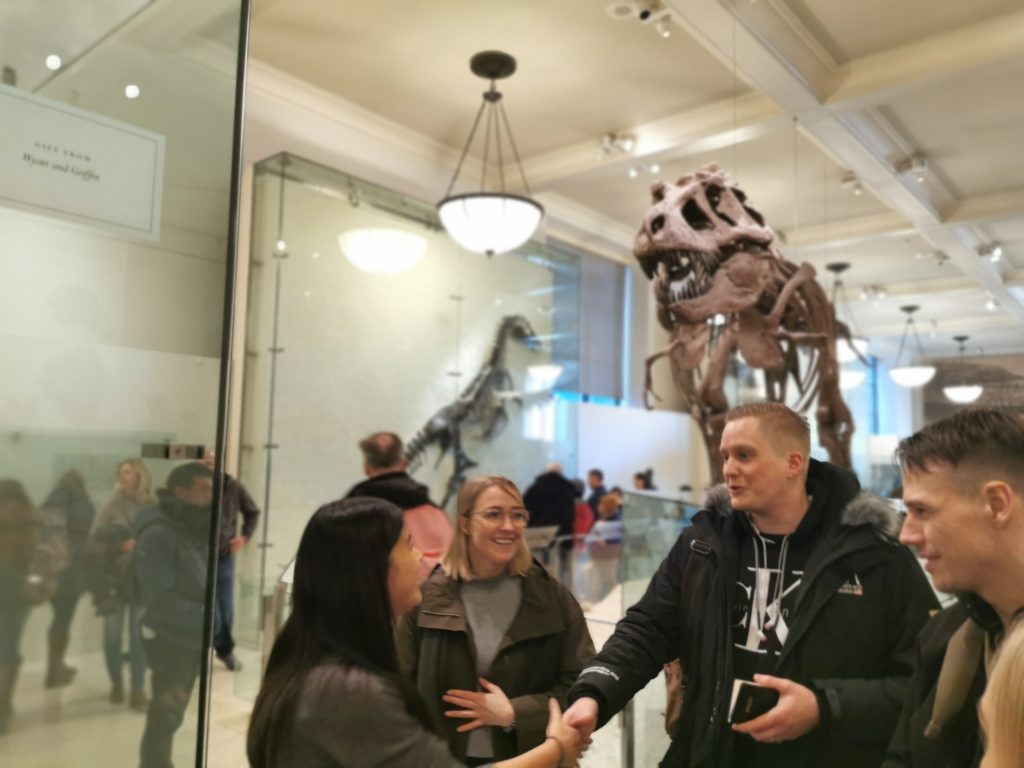
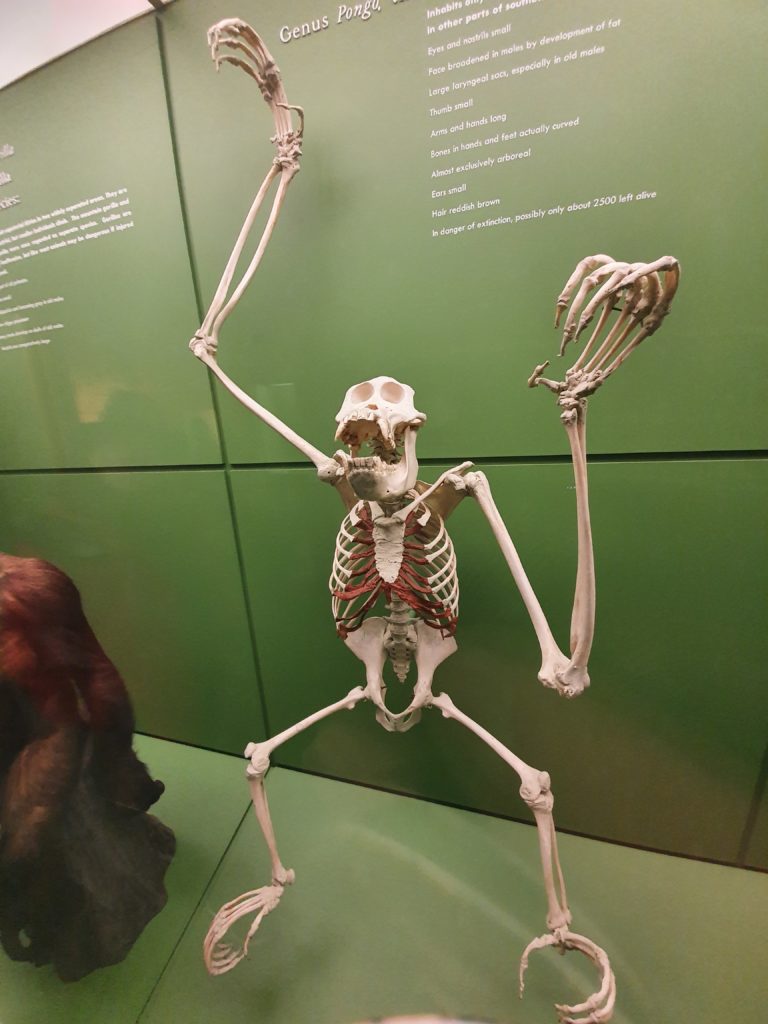
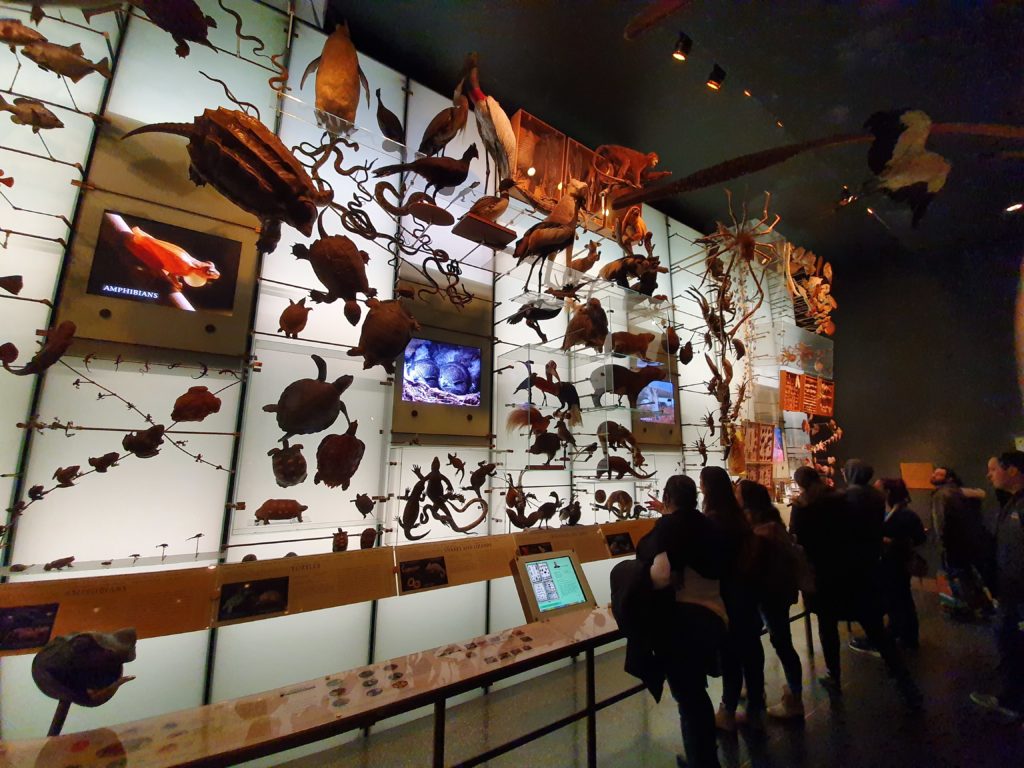
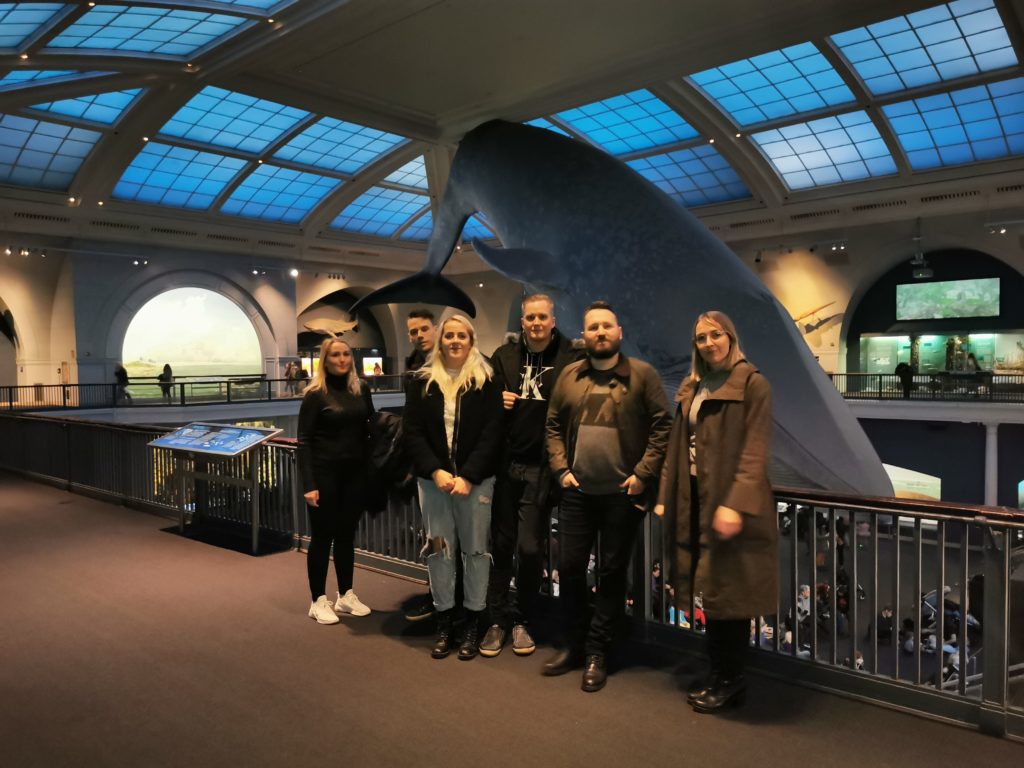
A recap from the Whale Museum’s history: 1998
On June 17th 1998 the museum moved in a 200 m2 area in a old baiting shed by the harbor called „Verbúðir“. In the next years the museum gained more popularity as it dwelled in a good relationship with the neighbours who were mostly fish baiting workers.
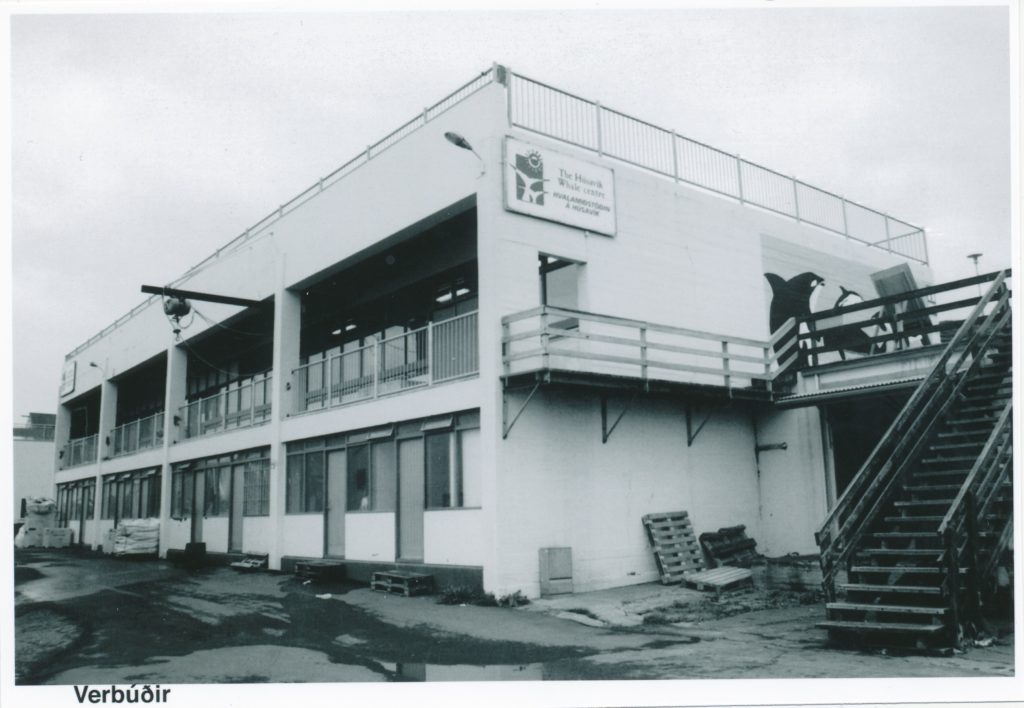
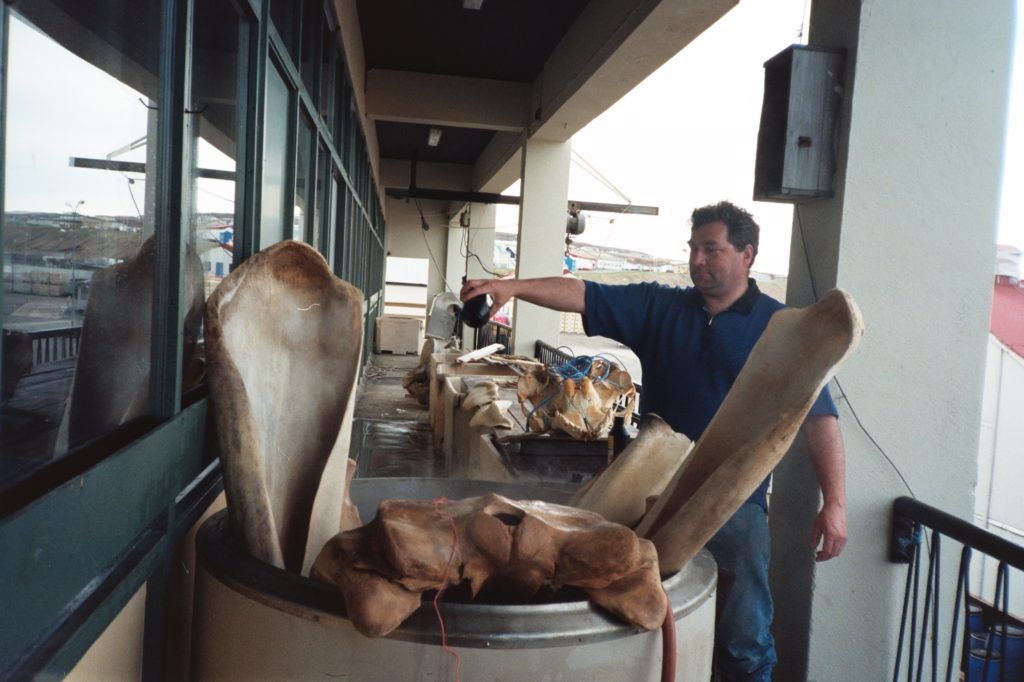
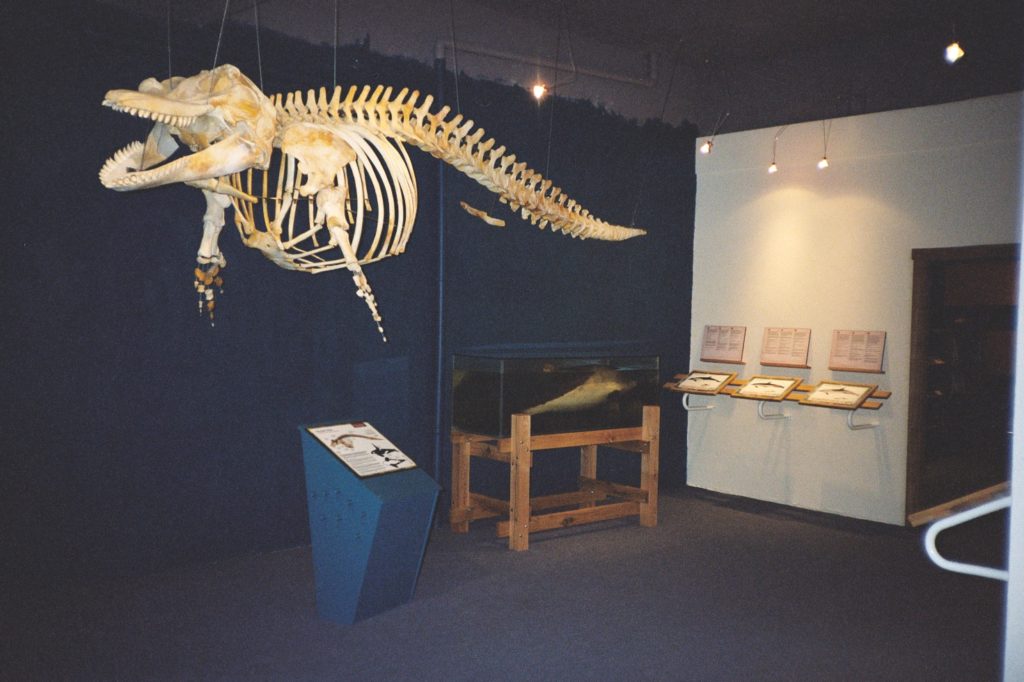
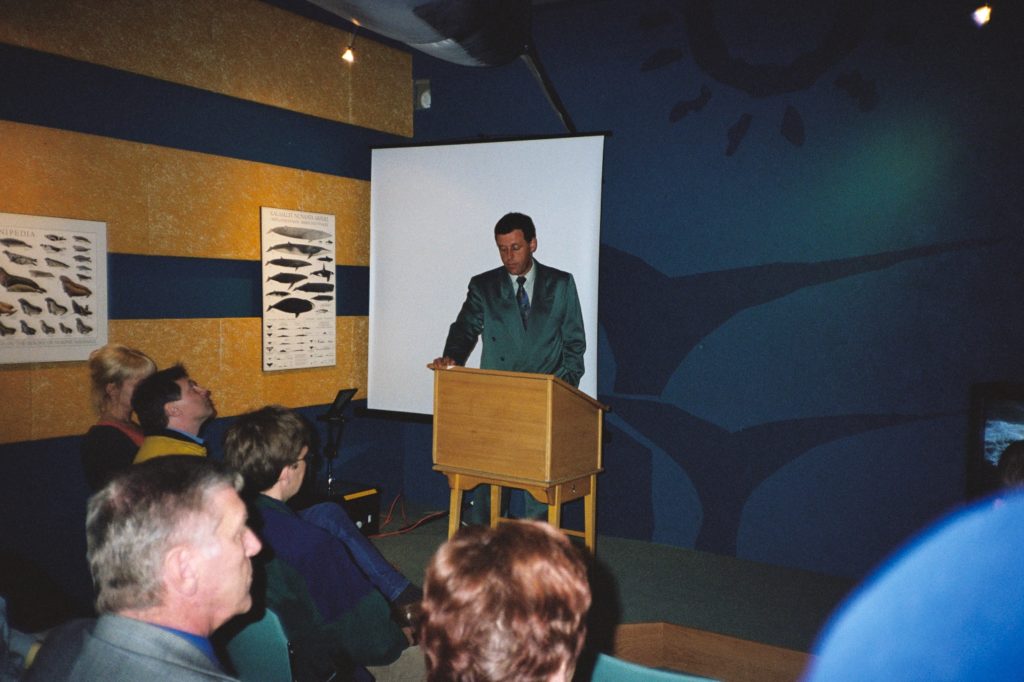
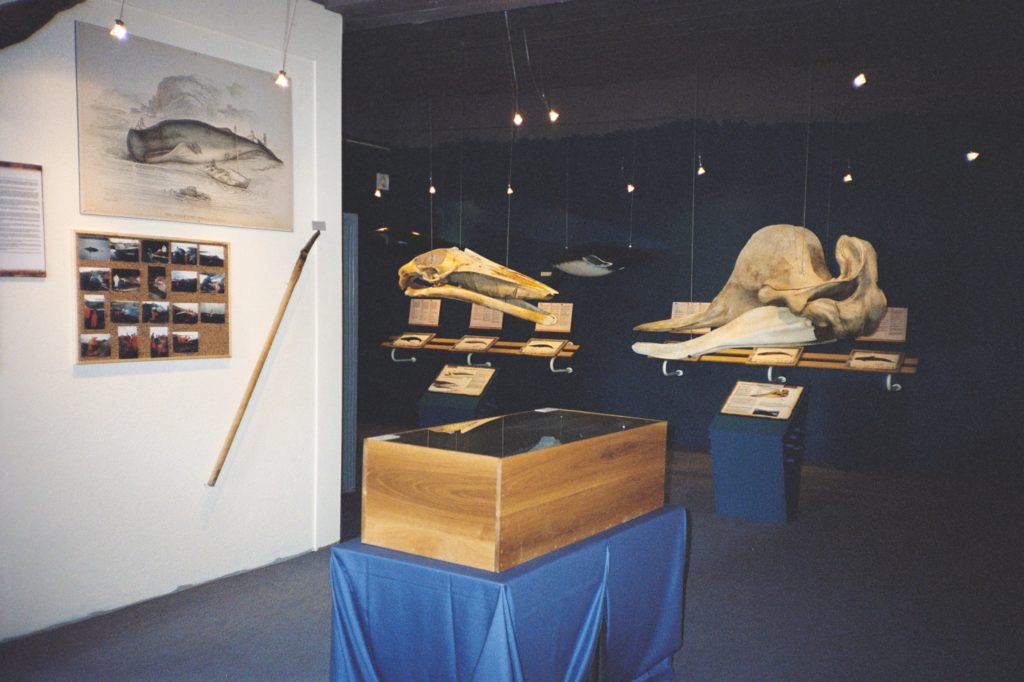
Ágrip úr sögu Hvalasafnsins: 1998
Þann 17. júní Árið 1998 flutti safnið í um 200 m2 rými á efri hæð “Verbúðanna” við höfnina undir nafninu “Hvalamiðstöðin á Húsavík”. Gestafjöldi óx jafnt og þétt og samhliða því þörfin fyrir stærra húsnæði sem hentaði starfsemi safnsins betur.





A recap from the Whale Museum’s history: 1997
The predecessor of the Húsavík Whale Museum was a small exhibition in Hotel Husavik that opened in 1997. At the time whale watching was beginning its third season in Húsavík‘s Skjálfandi bay and the growing popularity gave the Húsavík Hotel‘s manager Páll Þór Jónsson the idea to open an exhibition dedicated solely to whales. He contacted Ásbjörn Björgvinsson and convinced him to move to Húsavík, create the exhibition and to be the official caretaker.
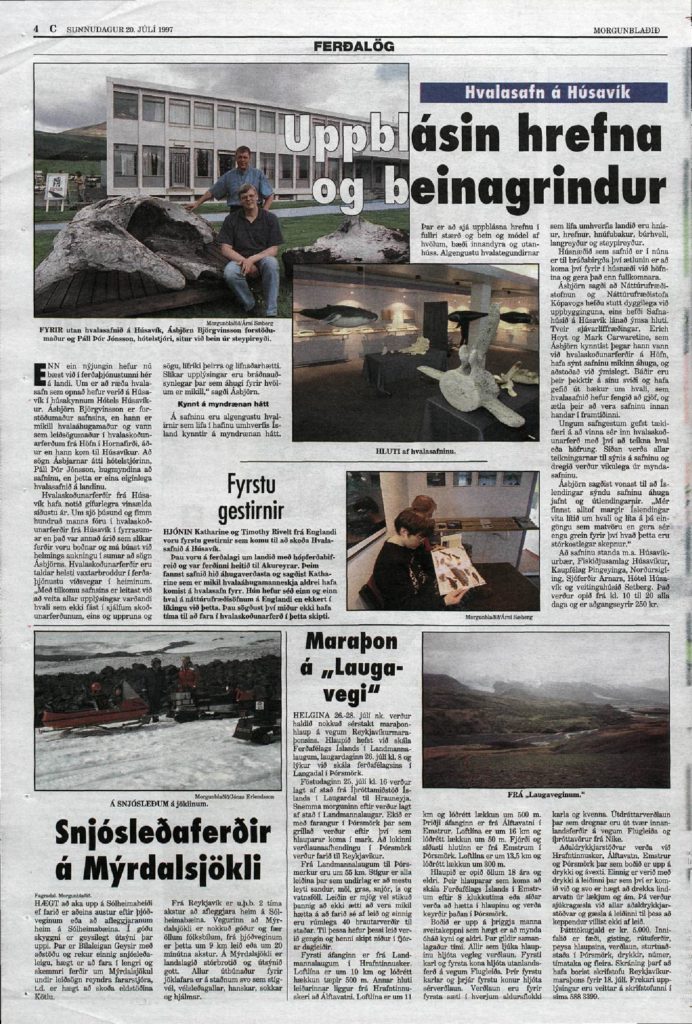
Ásbjörn went to London to meet Natural history museum‘s curator Richard Sabin. The main purpose was to learn whalebone cleaning as the London‘s Natural History Museum is the biggest skeleton museum in the world. Richard Sabin has been in some connection with Húsavík whale museum ever since. He for an example directed operations when whalebones were dug out in Keflavík á Ströndum in 2001 which you can read more about in the museum‘s biology room. Most recently Mr. Sabin was one of the headliners at the Whale Museum’s annual Whale Congress in 2019.
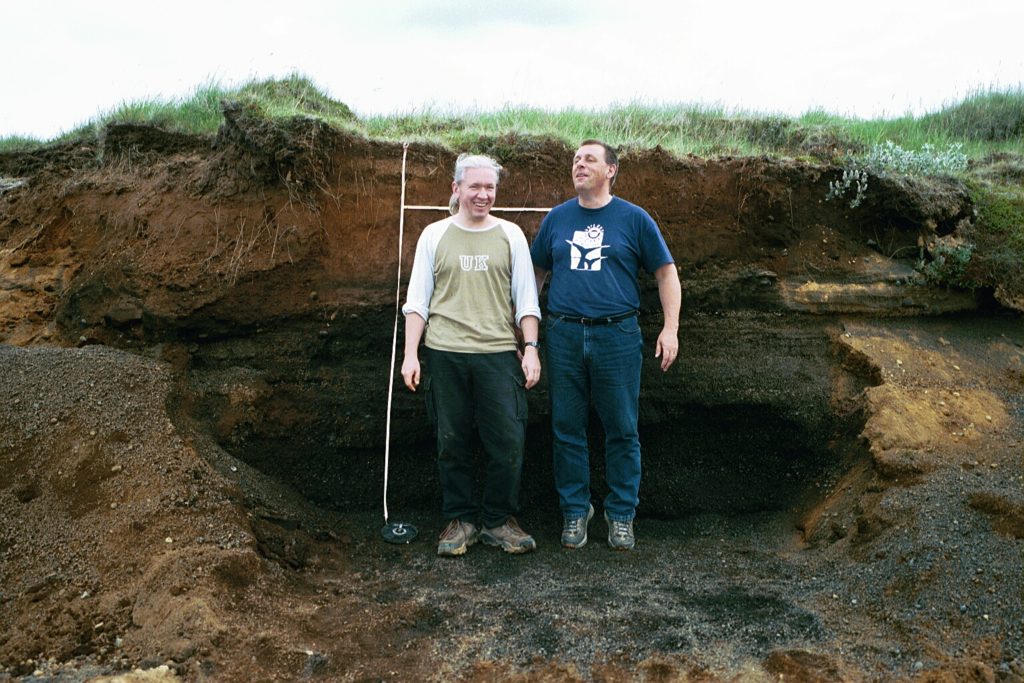
Ágrip úr sögu Hvalasafnsins: 1997
Forveri Hvalasafnsins á Húsavík var lítil sýning í sal félagsheimilisins á efri hæð Hótels Húsavíkur sem opnaði árið 1997. Á þessum tíma voru áætlaðar hvalaskoðunarferðir í boði þriðja árið í röð frá Húsavík og fékk hótelstjóri staðarhótelsins Páll Þór Jónsson þá hugmynd að opna sýningu á hótelinu tileinkaða hvölum. Ásbjörn Björgvinsson var fenginn til að leiða verkið og flutti hann norður ásamt fjölskyldu sinni í janúar 1997.
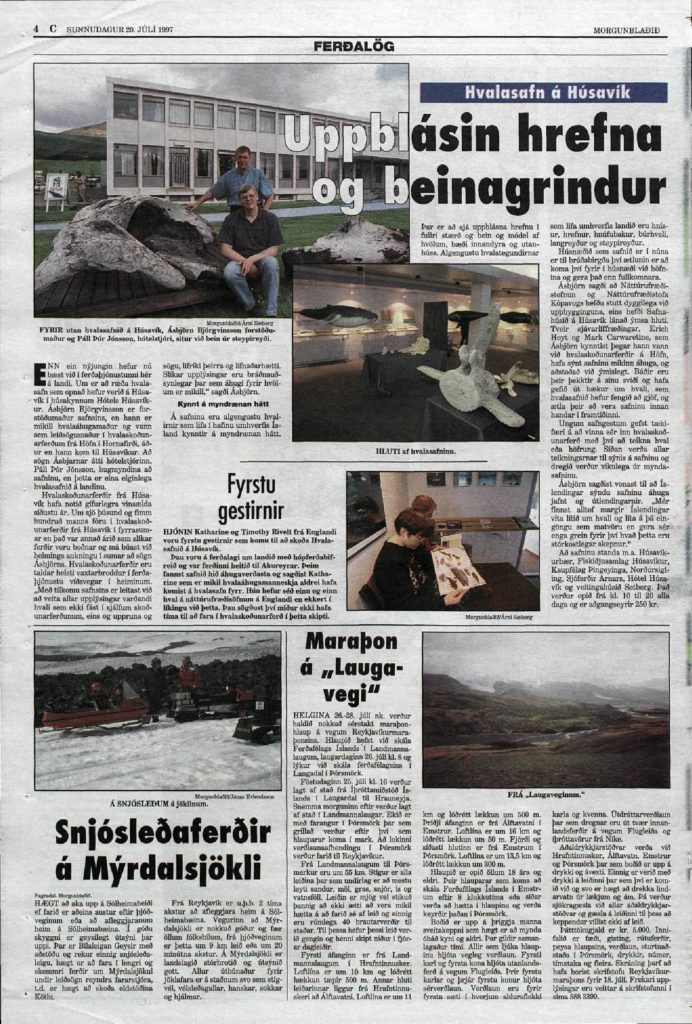
Ásbjörn fór til Englands á Breska náttúrusögusafnið á fund Richard Sabin sýningarstjóra safnsins í þeim tilgangi að læra að verka af hvalbeinunum en þar er að finna stærsta beinagrindasafn heims. Richard Sabin hefur verið í tengslum við safnið og Húsavík allar götur síðan. Hann stjórnaði til að mynda aðgerðum við uppgröft hvalbeina á Keflavík á Ströndum árið 2001 en þeim fundi er gerð betur skil í einu af sýningarrýmum safnsins.
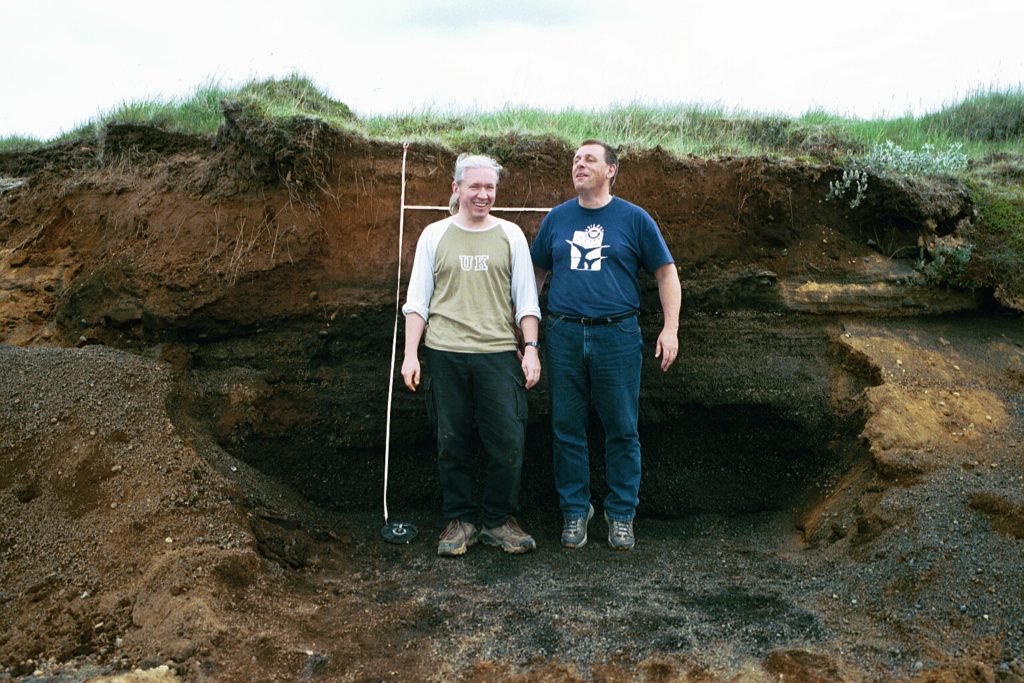
Richard
A recap from the whale museum’s history: 1992-1995
The Húsavík Whale Museum opened an anniversary exhibition in May 2019 to celebrate its 20th anniversary.
In the next weeks, some parts of the museum’s story will be reveiled here on the museum blog. We begin our journey in 1992 because as in all good stories there is always a preface behind it.
The origin of the Húsavík whale museum can be traced to whale watching tours that were operated in Höfn from 1992-1994 on the initiative of Discover the World. In the first trip were a british guide Mark Carwardine and Ásbjörn Björgvinsson which would later establish the Húsavík whale museum. The tours took about 8 hours. In 1994 scheduled whale watching tours in Húsavík were operated for the first time by the company Sjóferðir Arnars. In the following year a few groups arrived to Húsavik for whale watching, f.e. from Discover the World. Whale sightings had decreased in Höfn at the time but Húsavík which was known as an old minke whaling area had also its advantages for a whole lot shorter distances than the tours in Höfn‘s area. In 1995 a whale watching course was held in Keflavík where foreign speakers gave an inside knowledge about whale watching as a phenomenon. One of the speakers was Erich Hoyt. By the summer of 1995 two whale watching companies, North Sailing and Sjóferðir Arnars were opertaring from Húsavík harbor on a daily basis.
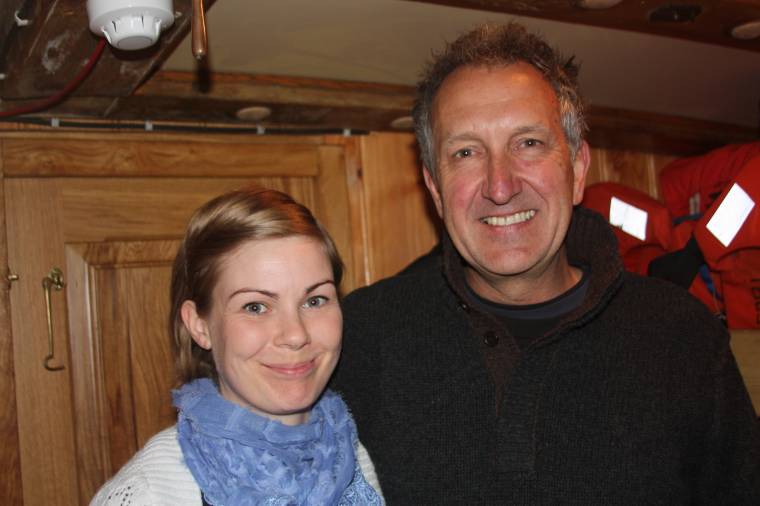
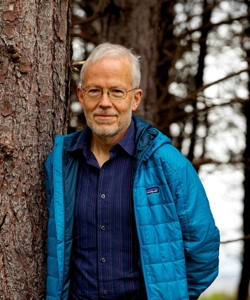
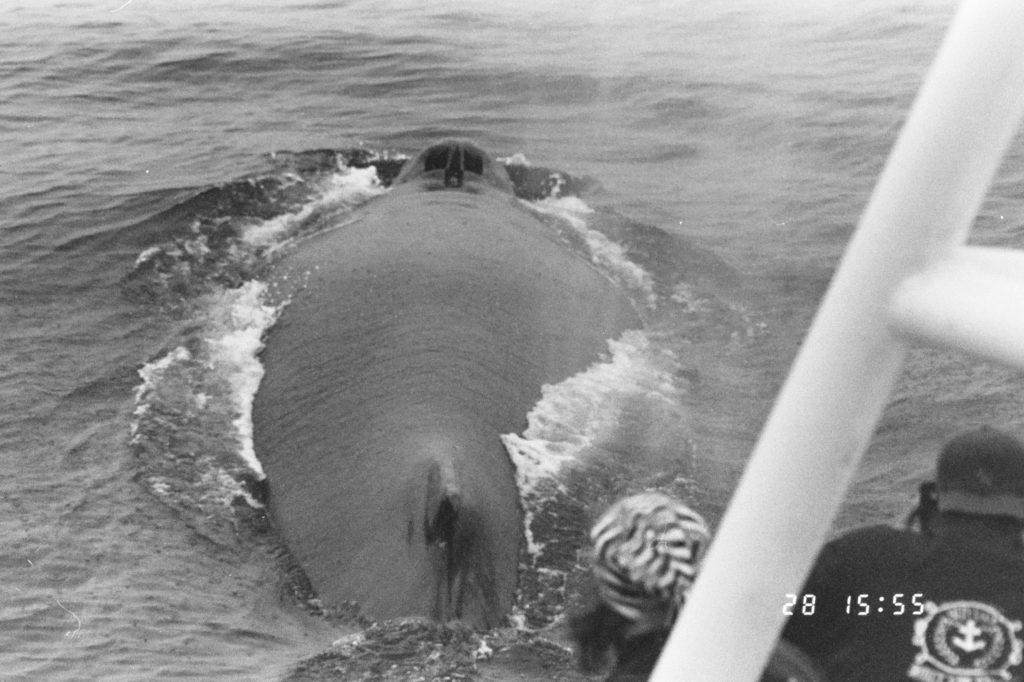
End of whale watching season 2019
Last Saturday was the final day of a 9 month long whale watching season in Húsasvík. Both Gentle Giants and North Sailing departed for their 30th and final tour of November but as a consequence of especially good weather in November, whale watching has been available every single day. According to recent update of Gentle Giants November 2019 was a month to remember. The bay was really active, with passengers gazing at as much as 30 humpback whales in the same tour as well as other species!
The Húsavík Whale Museum enjoyed a visit of over 31 thousand guests this season, a similar number of guests as in 2018. The museum was open every to from April 1st to October 31st. From November 1st and until March 31st the opening hours will be 10-16 on weekdays.
The museum’s employees are currently doing typical winter projects in maintenance, collection cataloguing, exhibition updates etc. etc.
Photo by: Christian Schmidt
Humpback whale – An introduction
Dear reader,
Whalecome at the introduction of the whales of Skjálfandi bay part 5. After the blue whale and the porpoise, the minke whale and the white-beaked dolphin lets introduce the humpback whale, the most commonly seen whale in Skjálfandi bay!
Latin name: Megaptera novaengliae
Common name: Humpback whale
Icelandic name: Hnúfubakur
Average
life span: 50 years
Diet: krill and small schooling fish
Size: 13 – 17 meters
Weight: 25-45 tonnes
Humpback whales are one of the largest whales, with males reaching lengths of 14 meters and females reaching lengths of 17 meters, about the size of a school bus. The pectoral flippers are a third of their body length and can reach the length of 6 meters. Humpback whales are active swimmers and can be seen breaching, tail slapping and flipper slapping. It is theorized that the breaching and tail/flipper slapping is a way of communicating with each other, but may also be used to show dominance and health during the mating season. Humpback whales also use vocalization to communicate with each other, males are known to sing during the mating season. A song can last up to 30 minutes and can be heard from over 30km away.
The year of the
humpback whale is split up in 2 sections feeding and breeding. During the
summer humpback whales can be found in colder nutrient rich waters like
Iceland, Norway and Canada, where they feed on krill. During the winter the
humpback whales can be found in warmer waters round the equator like the
Caribbean. Here the humpbacks mate and give birth. The gestation period of
humpback whales is 11 months. When a calf is born its 4,5 meters in size and
weighs 900kg. Calves can drink up to 600L milk per day. Mother and calf
communicate with each other through by whispering, this is so that they cannot
be overheard by predators such as orca´s (killer whale).
Humpback whales are baleen whales and thus use filter feeding to feed. Humpback
whales are known to use several techniques to feed, one of these techniques is
bubble net feeding. With bubble net feeding a humpback whale blows air from the
blow hole trapping the fish and krill to the surface and then feeds on the fish
and krill. Humpback whales dive on average round 5 to 10 minutes, but up to 40
minutes has been recorded. When humpback whales are travelling the swim between
5-15 km/h, when feeding they slow to a 2-5,5 km/h, the max speed they can reach
is 25km/h.
Humpback whales can be seen in Skjálfandi Bay for a great majority of the year, though their prime season is in the summer months.
White beaked dolphin – An introduction
Dear reader,
Whalecome at the introduction of the whales of Skjálfandi bay part 4. After the blue whale, the porpoise and the minke whale lets introduce the white-beaked dolphin!
Latin
name: Lagenorhynchus albirostris
Common name: White-beaked
dolphin
Icelandic name:
Average life span: 30 – 40 years old
Diet: Fish, crustaceans and cephalopods
Size: 3.1 meters
Weight: 180-350kg
White-beaked dolphins are endemic to the North Atlantic ocean. They can
only be found from the north east coast of America and the north west of Europe
up to Spitsbergen. White-beaked dolphins are very social, they live in groups
called pods from 5 to 50 dolphins, during certain social aggregations these pods
can contain over 100 or even 1000 dolphins. White-beaked dolphins are also
known to have all male pods called ´alliances´ and all female pods called ´parties´.
They are fast swimmers they can reach speeds of 45km/h. When they are
travelling at speed they sometimes jump.
White-beaked dolphins reach sexual maturity round the age of 7, breeding season
is from May through September. The gestation period is 11 months, when the
calves are born they are 1 meter long and weigh 40kg.
Young white-beaked dolphins love to play in the wake of boats and larger
whales. They like it so much that they can even harass whales to swim faster so
they can play in the wake.
Each dolphin has a slightly different tone range, from which other dolphins can
understand who said something through clicks and whistles.
White-beaked dolphins stay in Skjálfandi bay throughout the year. During the summer months it is possible to see mother and calf pairs.